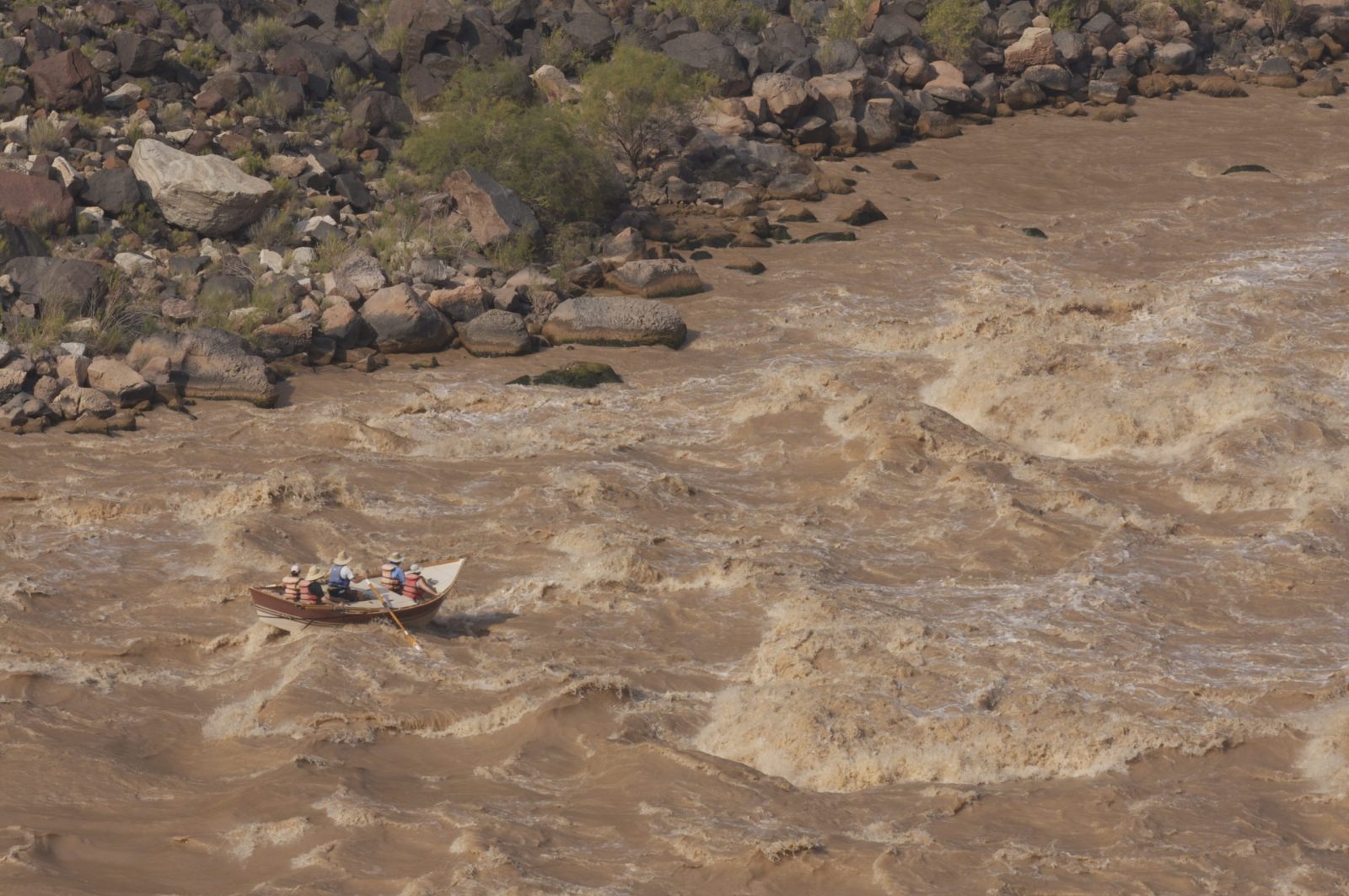
Rafting the Grand Canyon in 1896
Launching in Green River, Wyoming
On August 27, 1896, George Flavell and Ramon Montez launched their homemade, fifteen-and-a-half-foot boat, the Panthon, from Green River, Wyoming. The two intended to make the first recreational rafting trip through Grand Canyon. They planned to begin by running the Green River across Wyoming and Utah, to the Colorado River, and on through the Grand Canyon ending in Yuma, AZ. Previous voyages lined and portaged many of the major rapids in the Grand Canyon, including Lava Falls Rapid. It wasn’t until George Flavell and Ramon Montez decided to embark on their own adventure, that Lava Falls was finally run. What’s even more remarkable, is that the crew and the Panthon made it through the entire trip without any major mishaps.
George Flavell
George Flavell, who sometimes went by the names George Clark and Clark the Trapper, hunted and trapped while living in Yuma, AZ . After reading Robert Brewster Stanton’s inspiring story of rafting through the Grand Canyon in Scribner’s, he decided to traverse the Green and Colorado Rivers by boat himself. Although Flavell lacked whitewater boating experience, he was determined to see the beauty of the Colorado River drainage, through the Grand Canyon and experience the thrilling whitewater that would later make him into the legendary river runner, who was the first to run many of Grand Canyon’s largest rapids.
Ramon Montez
George Flavell enlisted the help of Ramon Montez for the expedition. In the journal Flavell kept, he described Montez as being a tenderfoot who lacked outdoor skill or knowledge. Little is known of Montez except his Hispanic descent and San Fernando California ties. Flavell did the rowing while on the expedition and Montez went along for the ride.
Building Their Boat
In early August of 1896, George Flavell and Ramon Montez arrived in Green River from San Fernando and began constructing a boat. The boat resembled wooden dories in use on the Colorado today because it was lightweight and built for stability. The flat bottomed craft sat low to the water with a high bow and stern that could punch through violent waves. They made the stern square, and reinforced the sides with wagon wheels to keep rocks from damaging its hull. The light weight pine construction lacked storage compartments.
Canvas decking covered the bow and stern to keep the provisions which included: coffee, beans, bacon, flour, and dried fruit dry. Wool blankets, a kitchen kit, guns, ammunition, tarps, traps, and a few materials for making repairs were also stowed. The Panthon had just one set of oars. Seven hundred and fifty feet of rope added an additional 125 pounds to the load for the purpose of portaging and lining the Pathon through rapids. The two man crew did not have life jackets and were fortunate the Panthon didn’t capsize, for they could have easily drown!
Downstream from Green River, Utah
After nearly a month without incident, Flavell and Montez arrived at Green River, Utah on September 25th. They resupplied and launched on the next day, September 26th. From there, the two reached the confluence of the Green River and the Colorado River and without a hitch. More challenging Cataract Canyon was there next obstacle. They reached Lees Ferry on October 12th. On October 17th they entered Marble Canyon where they portaged Soap Creek Rapid.
They reached Hance Rapid on October 21st and decided to run it, potentially influenced by a group of men on riding by on horseback. With an audience watching, the oarsman was probably feeling the pressure to impress the onlookers. Flavell ran the fierce cataract without incident and decided to run every rapid through the Grand Canyon. What a relief it must have been to be free from the daunting task of portaging and lining!
Inner Gorge of the Colorado
Inside the inner gorge, Grapevine Rapid gave them trouble requiring a stop for some minor repairs of the Panthon. Once inside the lower canyon, a few minor mistakes lead to several more repairs before running the Lava Falls Rapid. By October 28th, they reached the turbulent cataract. Upon seeing the fierce whitewater Flavell wrote, “There is only one stone we must not hit, our Tomb Stone!” They rafted Lava Falls without a hitch and after that ran Lava Cliff Rapid.
Below Grand Canyon
On October 30th they made it to Grand Wash Cliffs after only 65 days of being on the river. Moreover, it only took them 13 days to raft through the Grand Canyon itself. They ran all the rapids except for six. They were the first to run Lava Falls Rapid and many others. When asked by a reporter the reason for the trip, Flavell replied ”First, for the adventure; second, to see what so few people have seen; third, to hunt and trap; fourth, to examine the perpendicular walls of rock for gold”. Though he did not find gold or kill much wildlife, Flavell did have a wild adventure and was able to set eyes upon a place that few others had.
Historic Rafting Adventure
George Flavell and Ramon Montez were the first river runners to run Lava Falls Rapid, the most notorious rapid in the west. Previous expeditions through the passage including both of Major John Wesley Powell’s expeditions as well as Robert B. Stanton’s survey for the railroad, had portaged and lined around most of the major whitewater. But with a homemade boat and minimal equipment, two men– George Flavell and Ramon Montez, achieved a previously unattainable feat. Their historic journey paved the way for modern river runners who regularly run the mighty Lava Falls Rapid and others rapids of the Grand Canyon.




